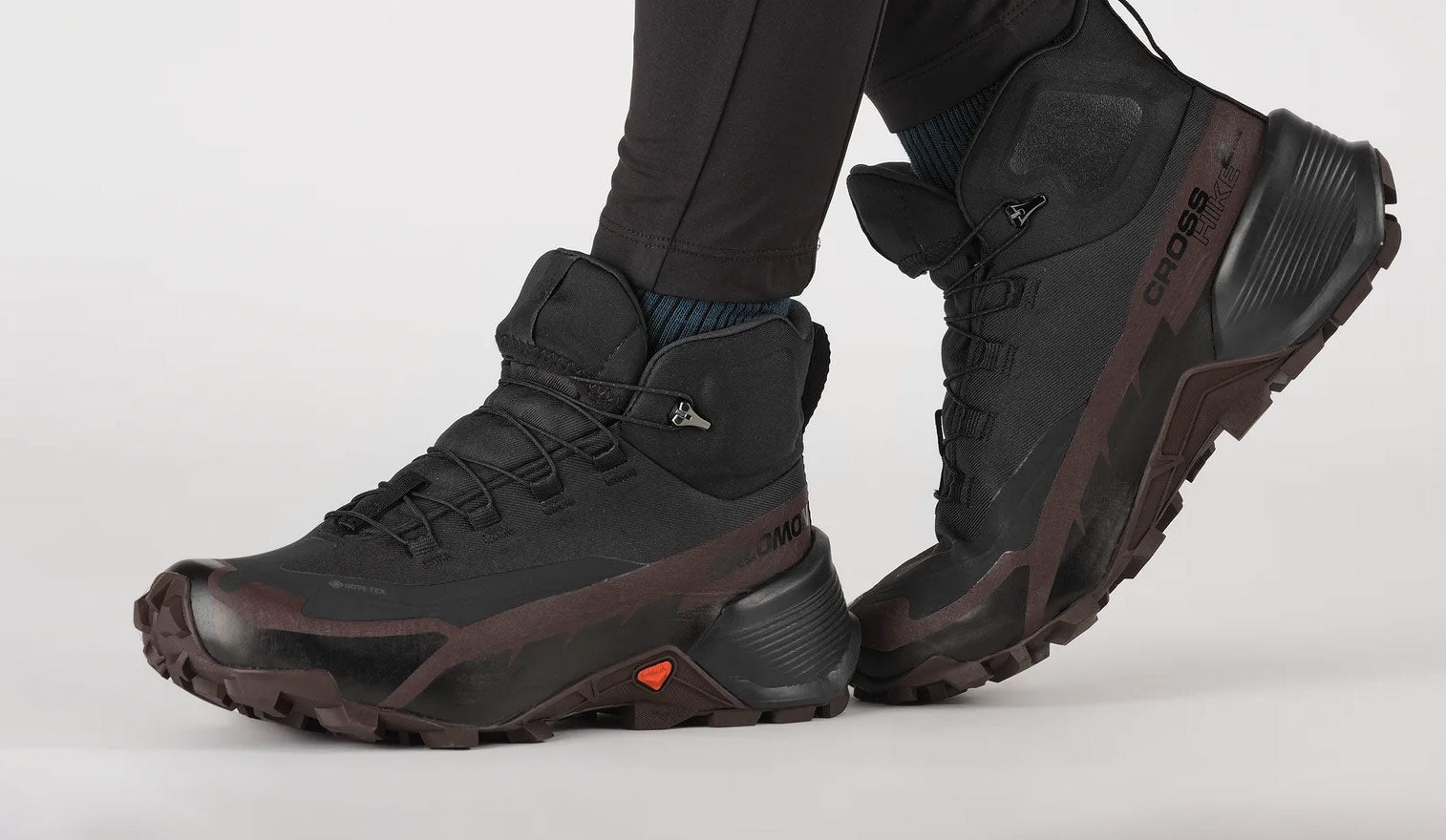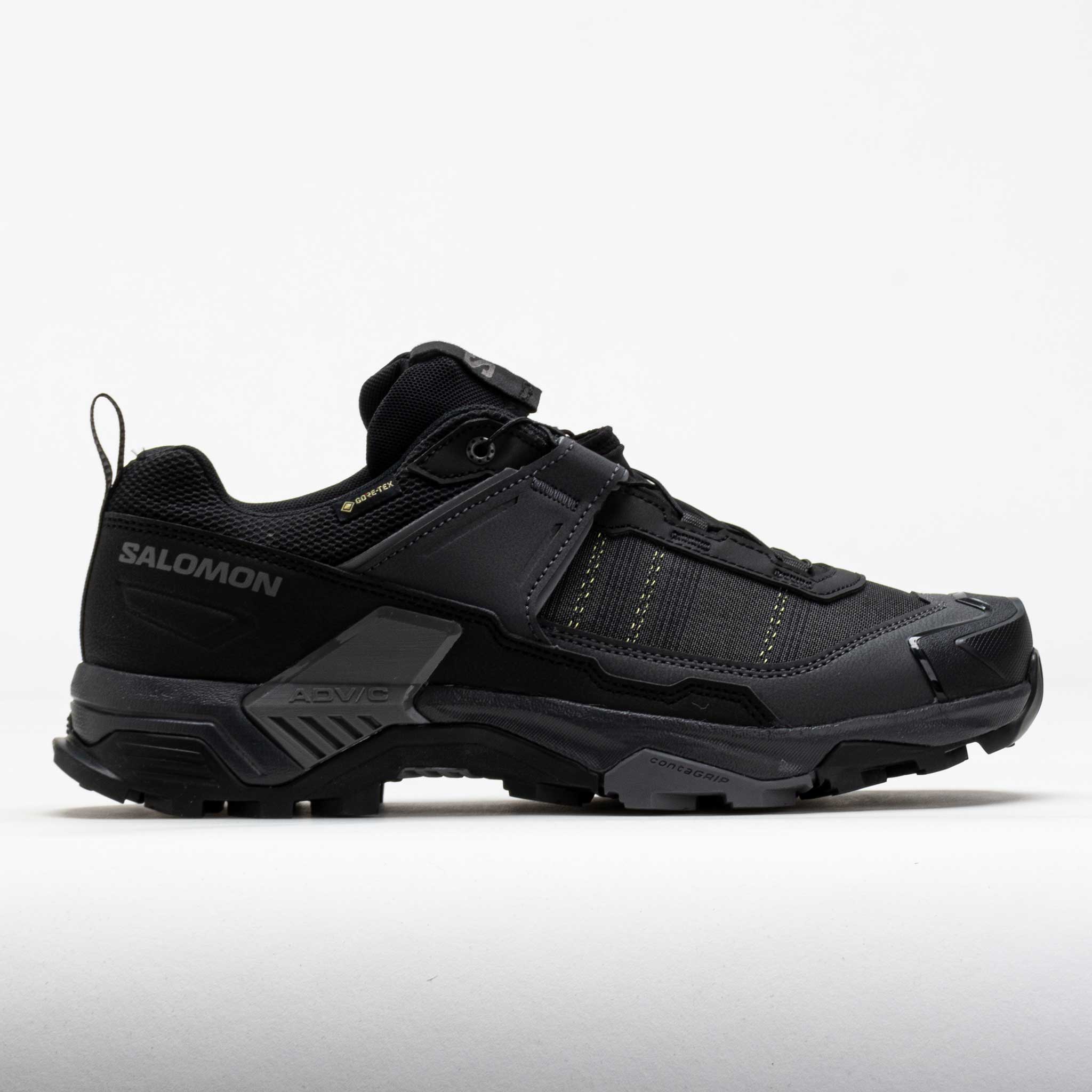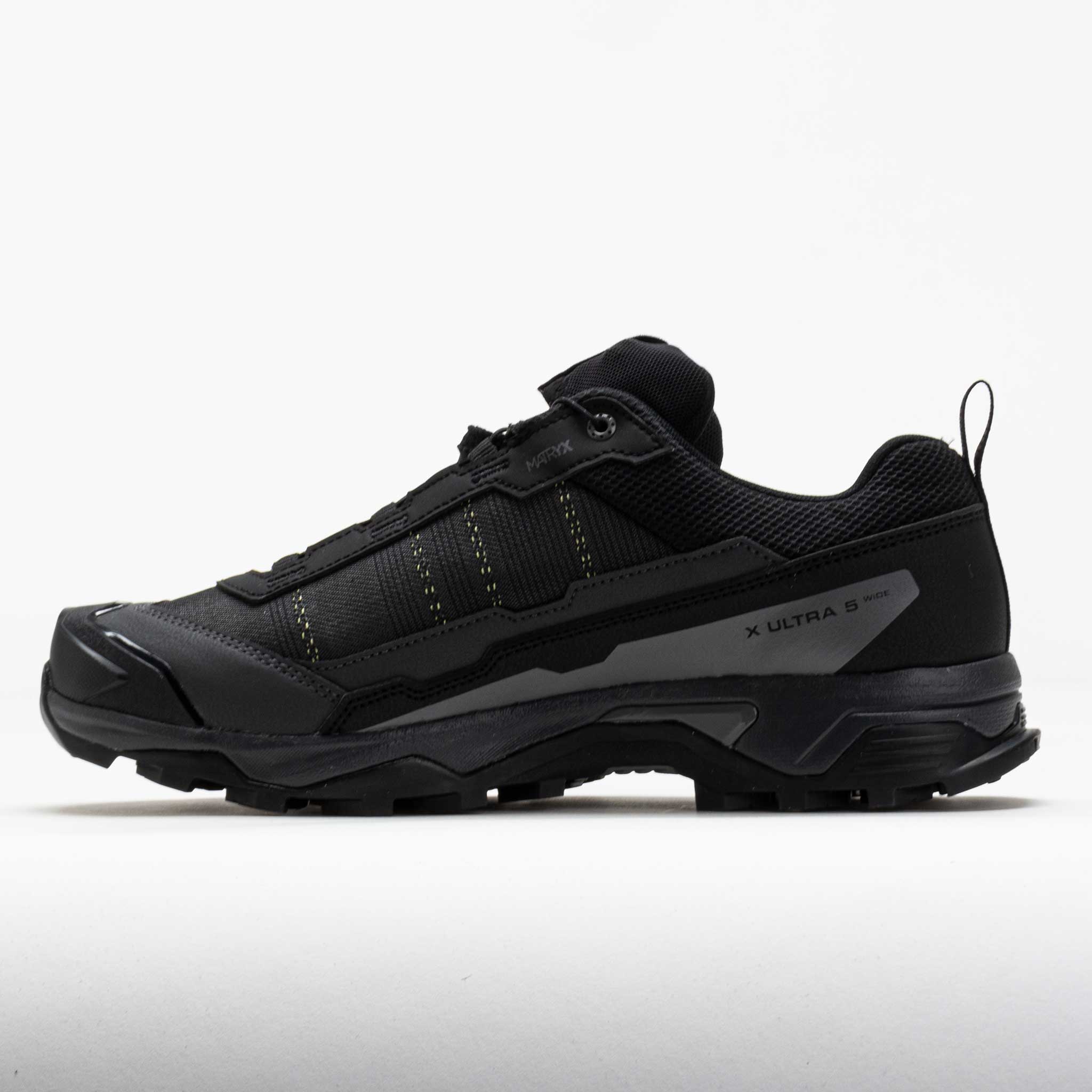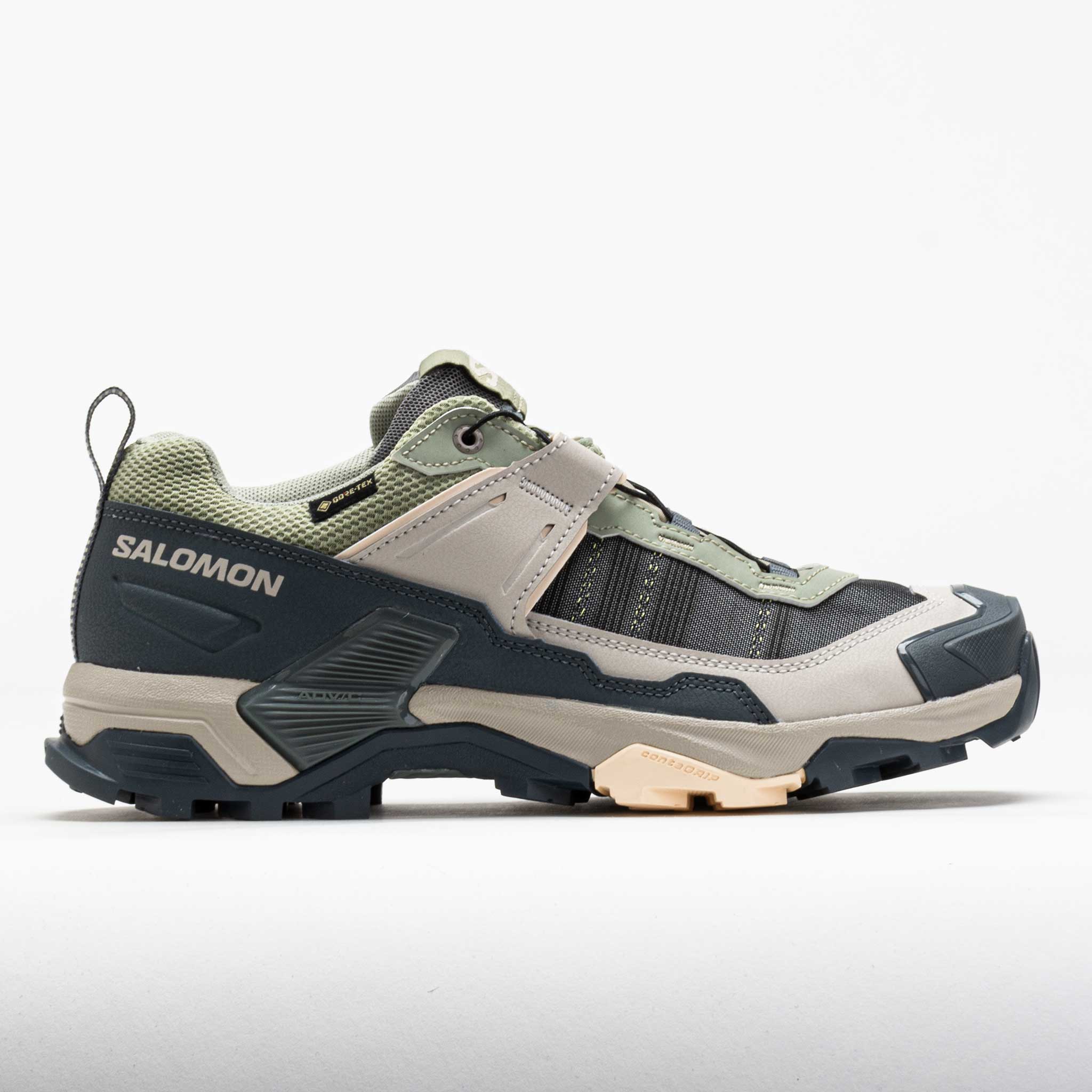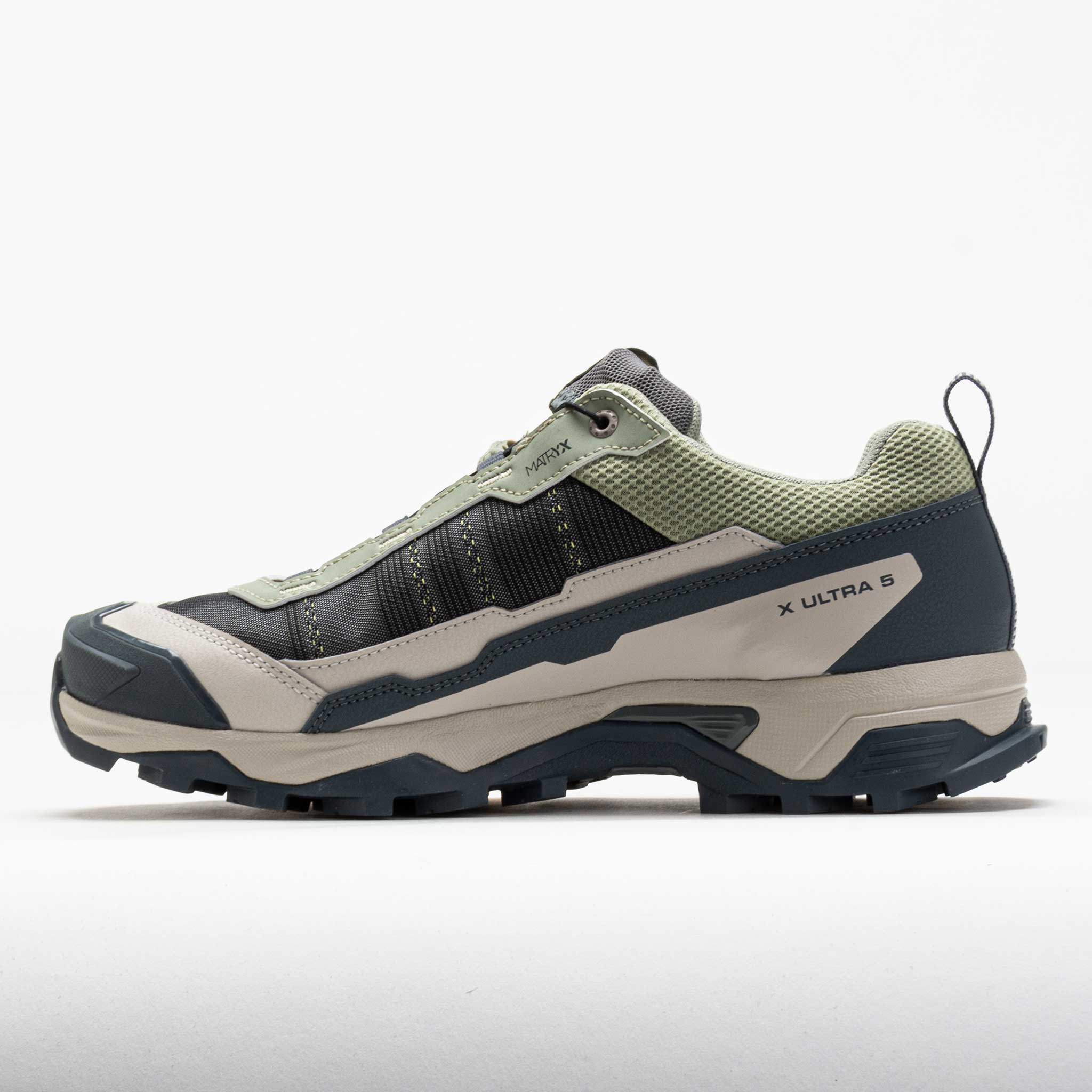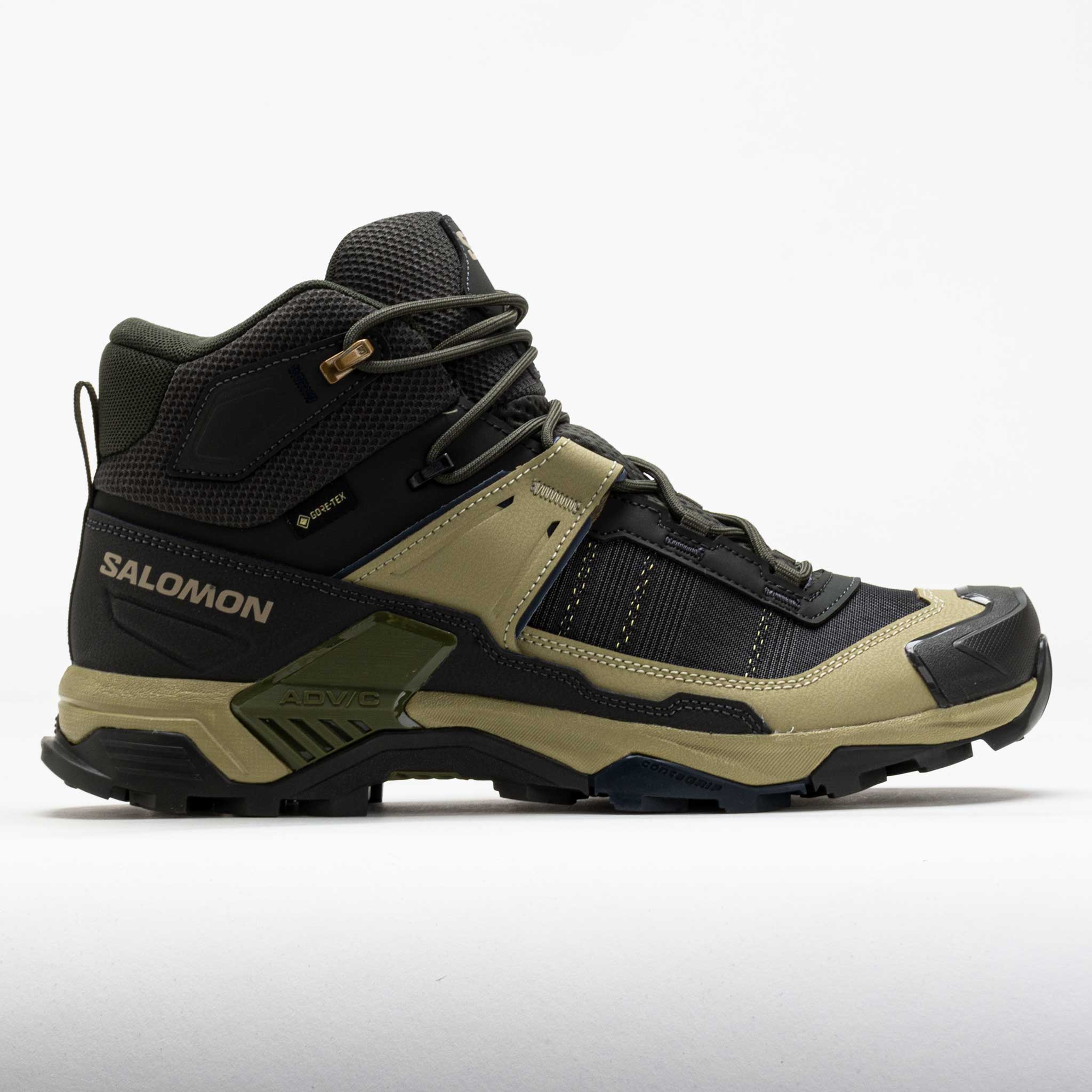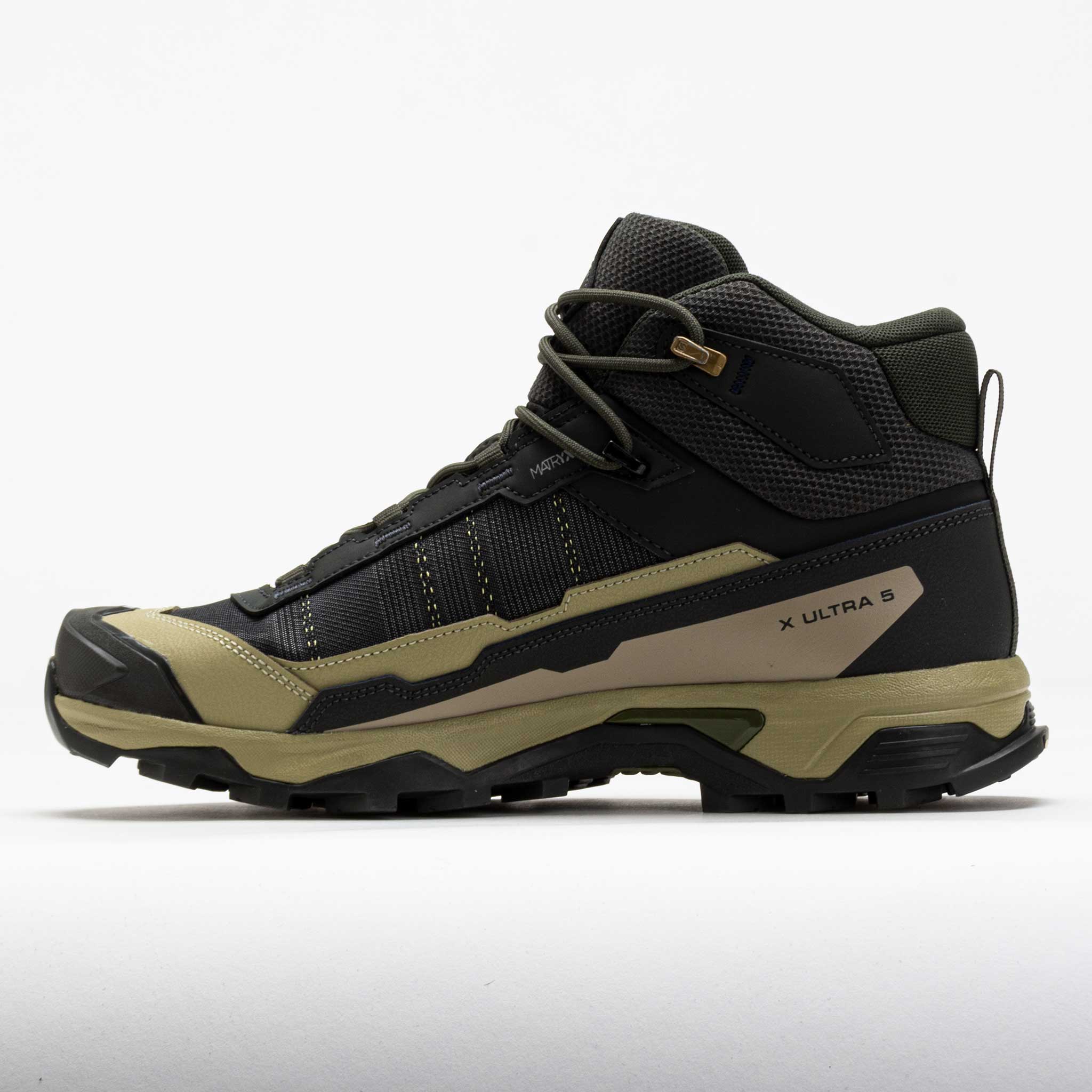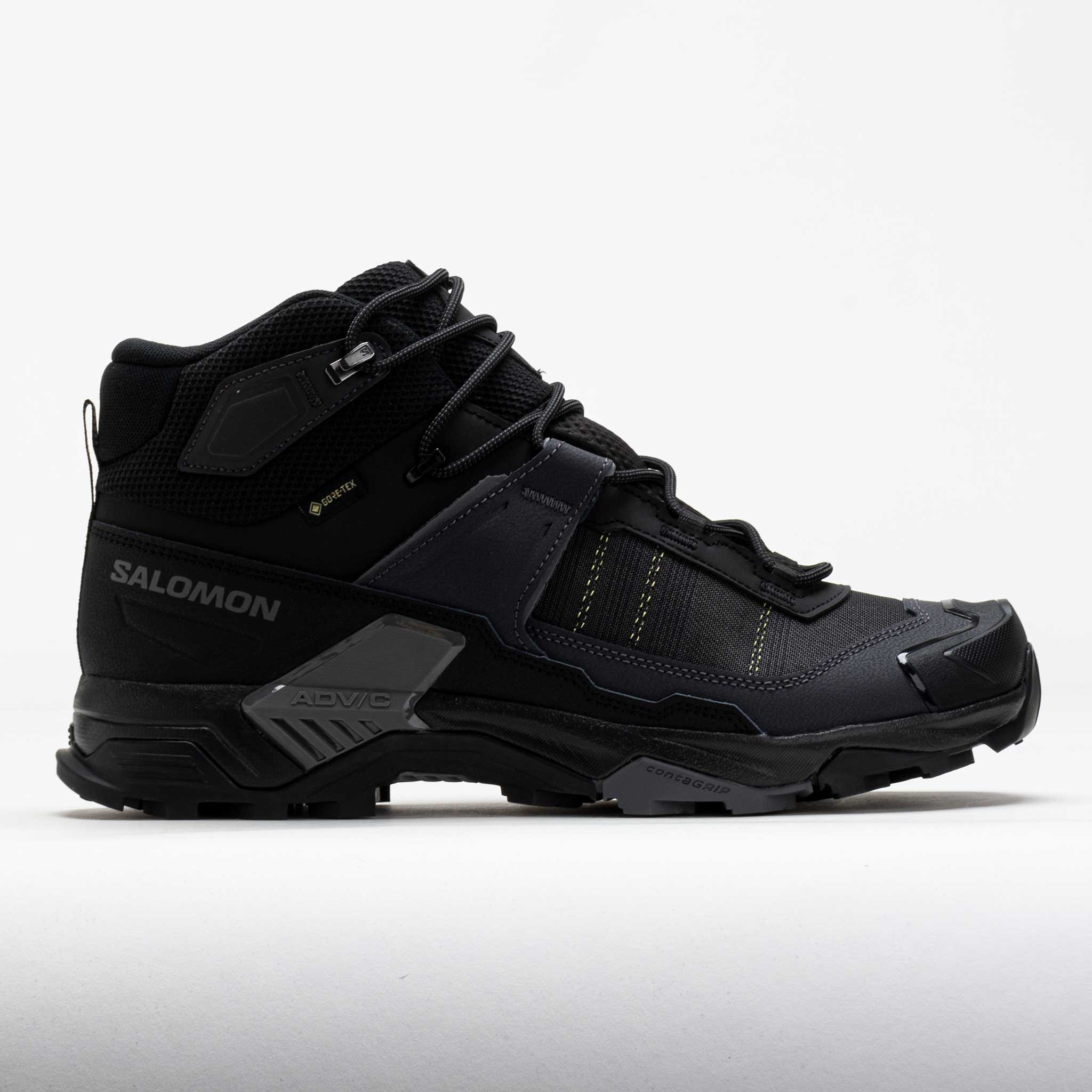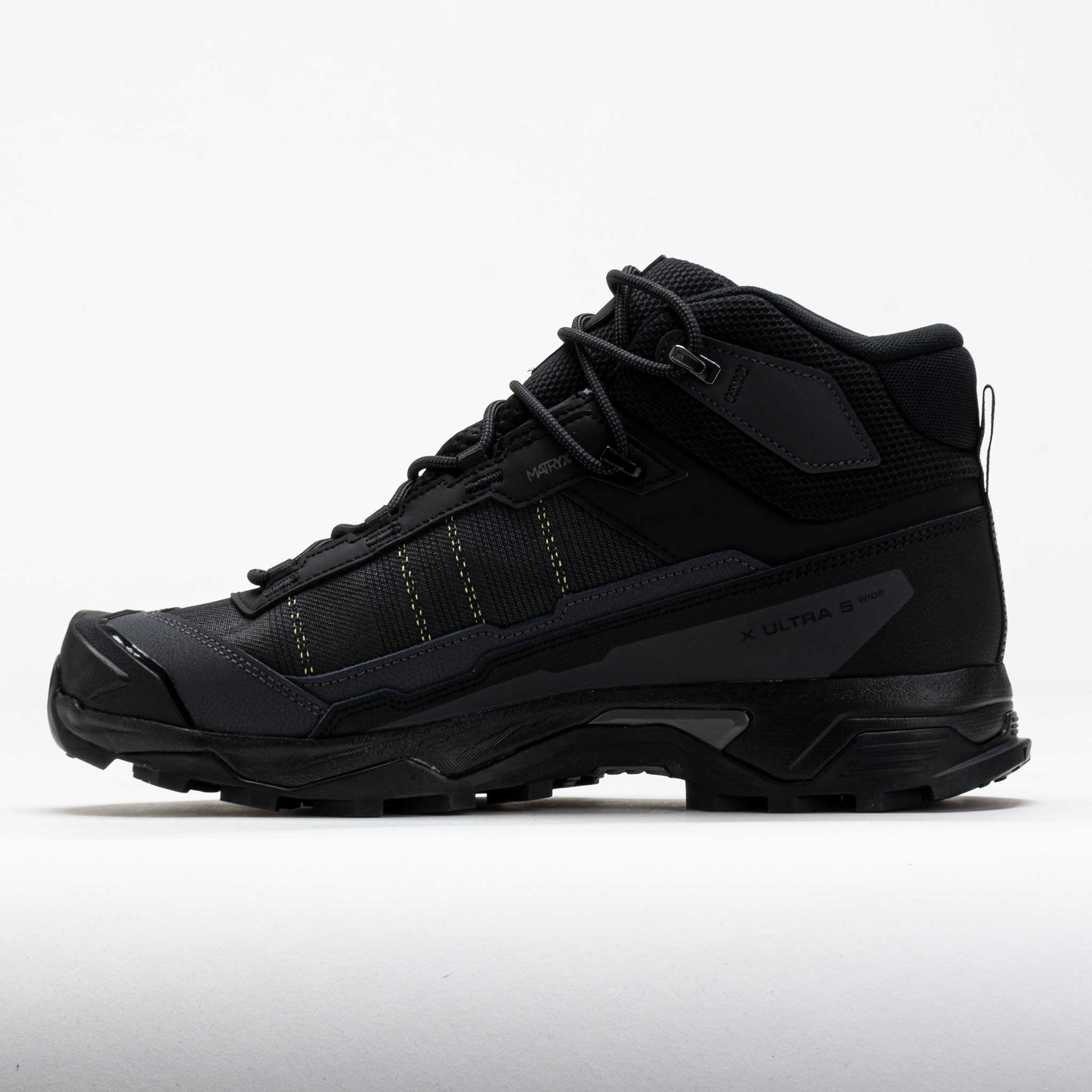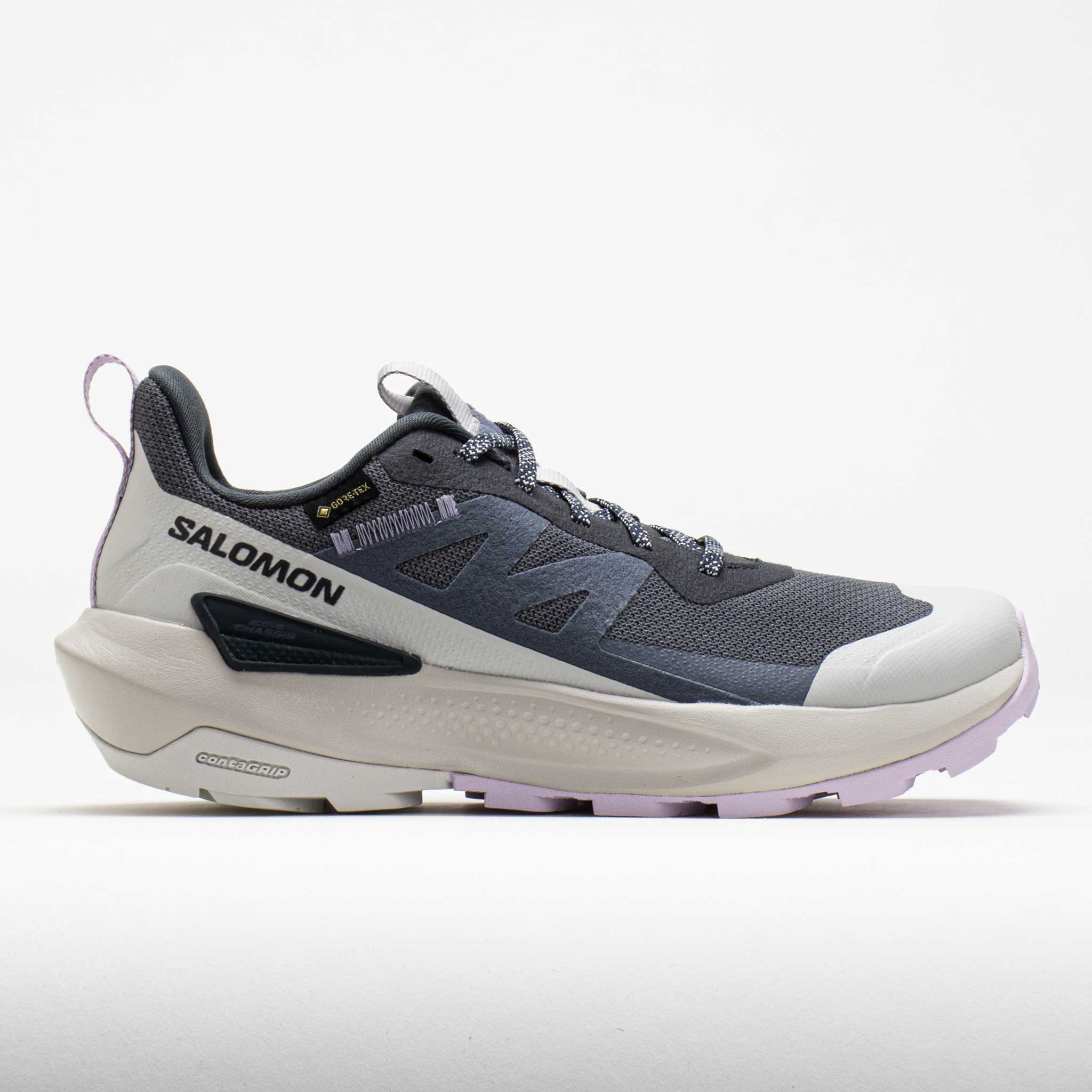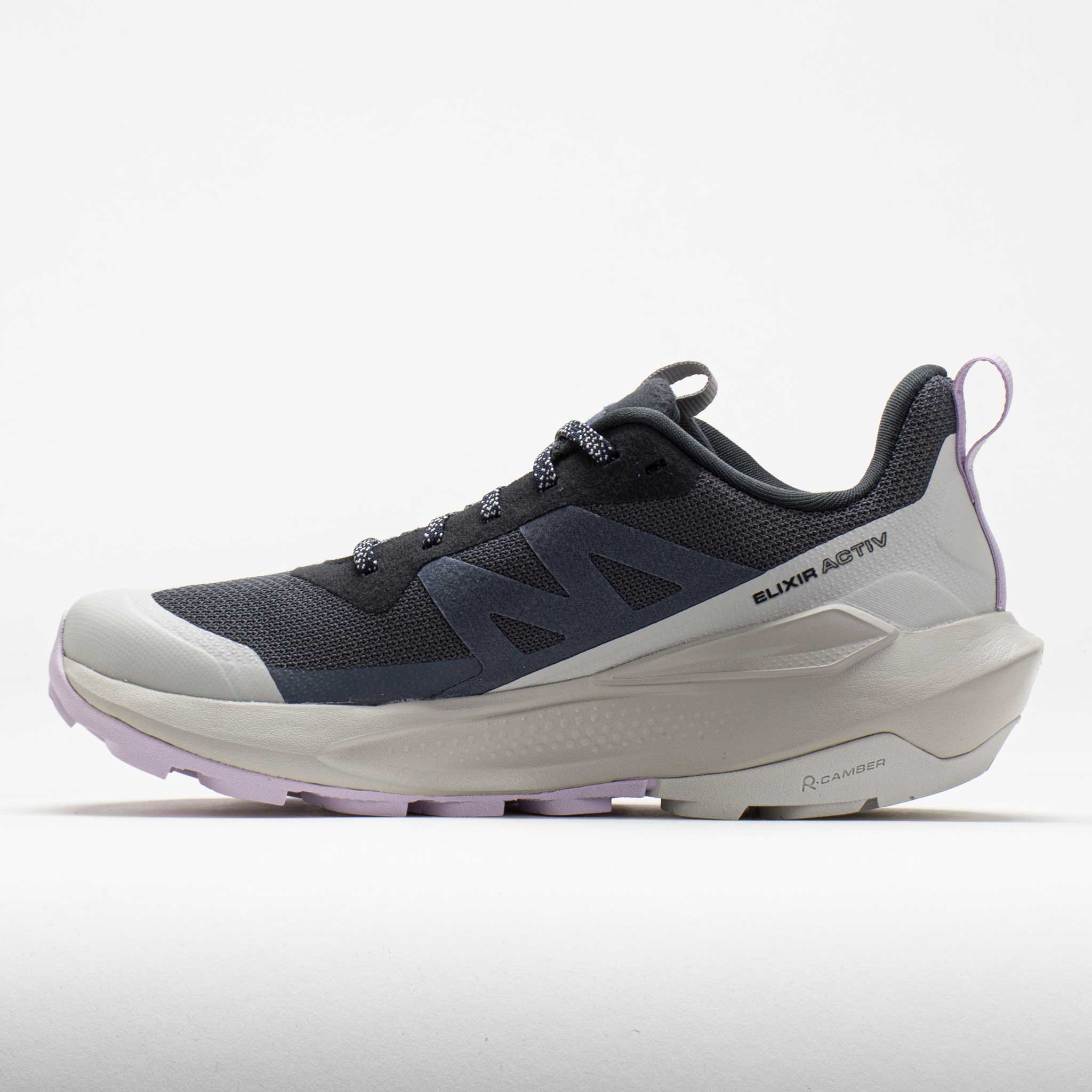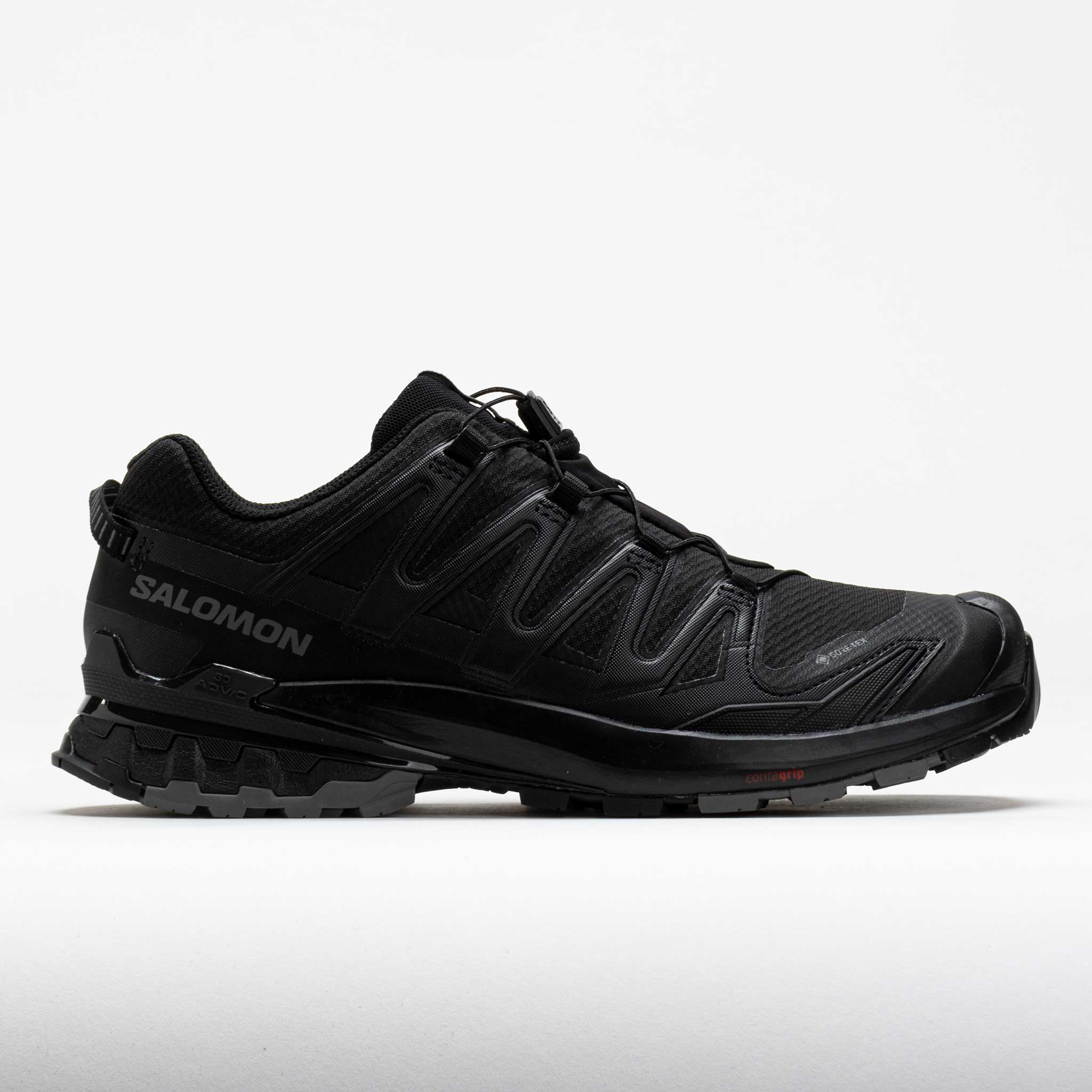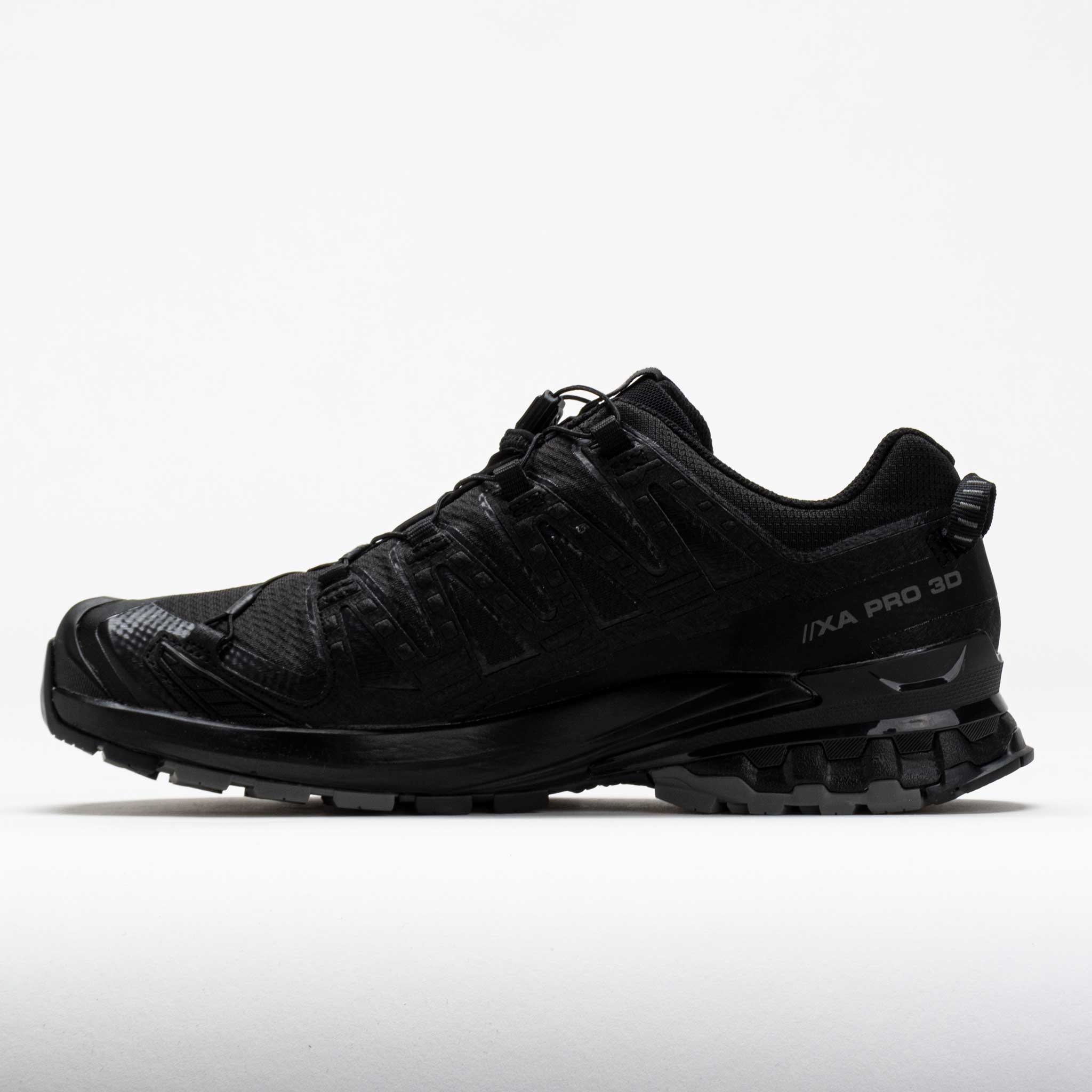In this article, we’re going to break down how Salomon’s hiking shoe technology benefits your hiking experience. Next, we’ll help you choose which model would be the best for you based on the distance you plan to hike, and your level of experience.
How Salomon hiking technology improves your performance
Salomon Cross Hike Mid GTX – rugged adventure boot
The Cross Hike is Salomon’s long-distance adventure boot.
This model has a higher-cut ankle, providing the support you need for carrying a moderate load over challenging terrain. And it also helps protect your ankles when climbing up hills or other obstacles while still allowing a bit of flexibility.
The outsole is covered with multi-directional 5mm lugs. This helps to dig down into the trail if you encounter mud, gravel, or slick leaves. The sticky rubber of the outsole helps you move across rocks or other surfaces with confidence.
Salomon built this boot with a Goretex membrane to make it waterproof. You can walk through water up to the top of the boot and your feet will stay dry.
This might not be the best choice if you are planning to go overnight backpacking. For these types of hikes, you may want to find a boot with sturdier ankle support.
What you’ll notice:
- Less leg strain.
The Cross Hike has a 10mm drop. This helps take strain off the lower leg muscles and your Achilles tendon.
- Great energy return.
The midsole cushioning is very responsive, so when your foot lands it absorbs the shock and springs you into your next step. This means you expend less energy with each step, which you’ll appreciate especially on longer hikes.
Salomon Odyssey Mid GTX – well-cushioned boot for long-distance hikes
The Odyssey is surprisingly lightweight for a heavily cushioned hiking boot. This makes it ideal for long-distance hiking adventures.
The upper is waterproof yet still breathable. It’s surrounded by overlays that protect you from rocks or other sharp objects. And, with the tongue sewn in and connected to the upper, it helps keep out small pebbles, dirt, or debris.
This boot also has a wide toe box to make sure your toes are able to splay comfortably on longer hikes while also allowing room for any swelling.
The Odyssey wouldn’t be for someone planning to go on a short or simple day hike. For day hiking adventures, you’ll likely want a low-cut and even lighter shoe.
What you’ll notice:
- Super comfort.
The midsole alone is heavily cushioned for great comfort, but you’ll really appreciate the plush feel of the insole.
- Grippy tread.
You can walk across slippery surfaces with confidence thanks to the extremely sticky and durable rubber.
Salomon X Ultra 3 LTR GTX – speedy day trekker
Salomon built this model for a speed hike through easy or technical terrain.
This shoe has strategically placed lugs along the sides and middle of the outsole for excellent grip in loose terrain, mud, or snow. And it’s super sticky for great traction across wet or slippery surfaces.
The X Ultra 3 is a low-cut shoe so it allows your foot to make more dynamic movements.
And you’ll appreciate the added comfort around the ankles thanks to the padded tongue and collars.
Just an FYI– This shoe has thinner cushioning. If you need more cushion for comfort, you could add a softer insole.
What you’ll notice:
- Quick lacing system.
The laces are tightened or loosened by a quick push or pull of the attached tab. It makes it easy for fast adjustments if your feet tend to swell.
- Narrow toe box.
The X Ultra 3 was designed to give you a snug fit. But, some people with a wider foot may find it a tad too narrow, and need to go up a half size (or whole size, depending).
How do I choose the best Salomon hiking shoe for me?
Here are a couple of key factors to think of when choosing your next hiking shoe:
- What type of hike will you be going on?
- What are the weather conditions?
- Will you be carrying a heavy backpack?
- What is your level of experience in hiking?
Casual day hikes
For a casual day hike, you’ll want a lightweight shoe with a low ankle cut that allows for speed and has enough traction to prevent slippage on standard trails. Breathable material is a plus, and a low drop is favorable.
Salomon’s X Ultra 3 shoe is a great candidate for day hikes. This shoe is lightweight, a low-ankle cut, and a nice, grippy outsole.
Or if you’re looking to save some money, and you don’t need all the bells and whistles of the X Ultra 3, then the Salomon Outline may be a better option for you. The Outline is still very light and has great traction. And with less tech packed into the upper, the Outline provides a comfortable fit for both foot and wallet.
Adventurous hikes
An adventurous hike will take you a bit off the beaten path and may cover longer distances. These treks are more strenuous than day hikes and involve traversing harsher terrain.
For these hikes, you’ll want a shoe that keeps you stable and protects you from the elements. A good adventure boot will usually have a higher drop, excellent traction, and ideally a waterproof upper.
The Salomon Cross Hike checks all these boxes.
The ankle support is perfect for stabilizing your center of gravity over slippery or unsteady terrain. The Gore-Tex lining will keep water out of your boot. The higher drop will guide your heel to hit the ground first. And the flexible outsole and large lugs will latch onto the ground, regardless of the type of terrain.
Longer treks & backpacking trips
For overnight hiking trips you’ll be carrying a backpack full of heavy gear.
For these types of backpacking treks, you’ll want a boot with thick cushioning to support the extra weight, and a sturdy upper for ankle support.
The Odyssey Mid is Salomon’s heavily cushioned boot for longer treks and backpacking. And the rigid upper helps stabilize you while carrying a heavy pack.
Frequently Asked Questions
Can I wear trail running shoes for hiking?
Depending on the level of hiking you’re going to be doing, a trail running shoe might be decent.
A day hike with little to no climbing would be fine in a trail runner. And, if you’re trail running shoe has deep lugs, you can even hike through technical terrain just fine.
Just keep in mind that a trail running shoe isn’t going to have ankle support that you’ll find in a hiking shoe.
If possible, it is always best to have a shoe designated for a specific task.
How often should I replace my Salomon hiking shoes?
A good hiking shoe should give you about 350-500 miles of use.
But, you should make it a practice to take notice of signs that indicate it’s time to replace your hikers:
- On the outsole, are the lugs worn down or is the traction not as sticky as it once was
- Has the upper lost its ability to hold your foot firmly in place
- Are you noticing that you experience aches or pain in your joints that you weren’t feeling before? This could be a sign of a worn midsole
I need help deciding: Which would be the best hiking shoe for a beginner?
Salomon Outline: For a beginner, the Outline would be a good choice for day hiking. It’s a lightweight and flexible hiking shoe that also has decent comfort. And, it’s a less expensive model so you don’t have to feel like you’re breaking the bank.
Salomon Odyssey Mid GTX: The Odyssey would be a good choice for overnight camping trips or for hikes when carrying a backpack. It has a sturdier build and a higher ankle for the support that you’ll need.
Back To Top
